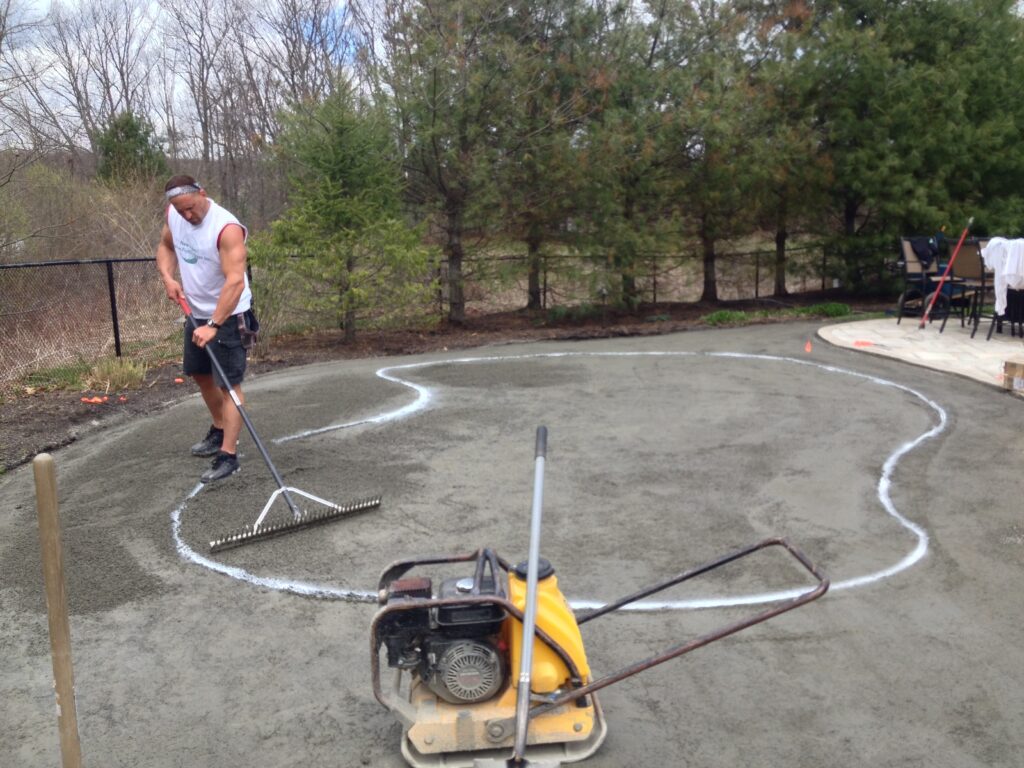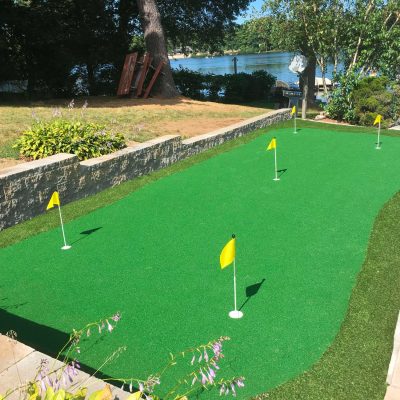When getting turf, you want to make sure your turf installation is perfect for your property. For example, one thing to consider is what the turf will be used for. For example. the turf installations we do for dog kennels are much different than for soccer fields. Whether the turf is indoor or outdoor, whether it is going to see a lot of use each day in the case of an athletic field, or whether it is just designed to replace your front or back yard all can contribute to what turf is best for your property. One thing to consider for a turf installation project is whether or not to use sand-filled turf. The infill for your turf can have different effects on how your turf feels, how long lasts, and more.
What Is Turf Infill?
Before we get into how sand-filled turf works, we need to explain the parts of turf. Starting from the bottom layer, many turf installations have a drainage layer made of crushed stone or oyster gravel. This effectively drains rainwater and other fluids. Above this layer of stone are multiple layers of shock-absorbing materials designed to give the turf the feel of walking on soil and grass. For athletic turf, there it is important to install shock absorption layers to ensure that the entire turf installation has the exact same feel as a traditional field. While turf that is simply used for a backyard might have less shock absorption. Next is the infill with is the material interspersed around the fake grass blades that gives them their shape and allows them to stand upright. Infill is the replacement soil in a sense. This is one of the most important layers of the turf as it gives your turf its shape and feel and helps with absorption.
Benefits of Sand Infill for Turf Installation
There are a variety of infill options including rubber, sand, and more. Sand has many benefits for a turf project. Sand is often used for athletic turf because of how durable it makes the turf field. Rubber pieces of infill can get kicked up quite easily and lead to the turf becoming misshapen. By contrast, sand can hold up longer term. Sand also absorbs water better than rubber pieces and can help when turf is rained on. The sand can absorb and drain the water to the drainage layer easier than rubber can. Many people also go with sand options because of how cost effective they are. For the durability they provide they are very cost effective. Sand is also more pet friendly and kid friendly than rubber pieces that kids or dogs might put in their mouth and chew on.
Get Turf Quotes in Massachusetts
If you are interested in a quote for new turf installation services in Massachusetts, please contact our team. We would be happy to discuss turf material options, pricing, design, and more.


